In Cusco, we billeted ourselves at an extremely expensive hotel, Rumi Punku, that I had selected and, for which, I was duly berated. $90 per night was pushing the boat out rather too much but the other alternative, The Walk on Inn at $30 per night seemed to be a bit too much like being back at school (shared dorms).
Cusco itself, is an ancient Inca Capital, said to have been founded in 100AD, and has since developed into a major commercial and tourist centre. There must be hundreds of thousands of visitors to this city all interested in its Inca past. Almost every street has remains of Inca walls, arches and doorways; the perfect stonework now serving as the foundations for more modern dwellings. It is a city with space and greenery, sunshine and warmth (though it does get very cold at night). Of course, it has hundreds of tourist shops, street sellers, travel and tour operators and a number of surprisingly good, inexpensive restaurants.
The Incas ruled this part of the world from 11th century until its death in the 16th century and Cusco was the capital of the Inca Empire. The indigenous Andean society was based on the village community which was knit by ties of blood to the family and by economic necessity to the land, which was held in common. The Incas conquered huge territories and imposed upon the communities, through an unchallengeable central government, a willing spiritual and economic submission to the State. The common religion was worship of the Sun whose representative on Earth was the Inca King. The mass of people were subjected to rigorous planning for production of agriculture and textiles and other goods and storage barns were erected to house excess, to guard against years of lesser yields. They also built extensive pathways to connect the various parts of their empire and to aid communication. It was a magnificent effort not unlike the achievements of the Egyptians, Greeks and Romans.
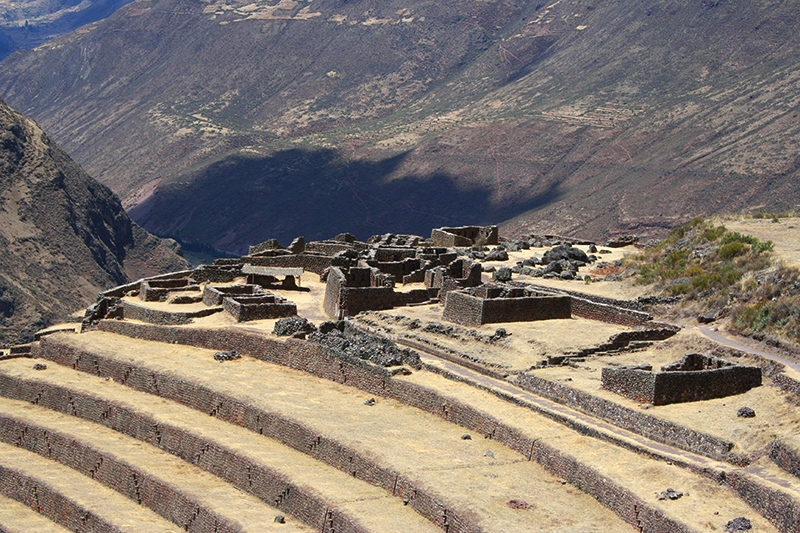 An interesting excursion took us along the Sacred Valley of the Incas along the River Urubamba. There are a number of Inca towns along the route near to Cusco but the highlight was Pisac which has a superb Inca Fortress high in the hillside. Here is the Reloj Solar (Hitching Post of the Sun), now closed off because thieves stole some part of it), palaces of the moon and stars, solstice markers, baths and water channels. It is surprisingly well preserved with only the roofs of buildings missing. Although the walls were made of thick stone that can withstand whatever time throws at them, the roofs were made from straw (obviously bio degradable) and have long gone. The Spanish invaders (the locals do not like to call them conquerors) used much of the Inca masonry to build their own constructions but plainly did not feel inclined to move the stones from this inaccessible location.
An interesting excursion took us along the Sacred Valley of the Incas along the River Urubamba. There are a number of Inca towns along the route near to Cusco but the highlight was Pisac which has a superb Inca Fortress high in the hillside. Here is the Reloj Solar (Hitching Post of the Sun), now closed off because thieves stole some part of it), palaces of the moon and stars, solstice markers, baths and water channels. It is surprisingly well preserved with only the roofs of buildings missing. Although the walls were made of thick stone that can withstand whatever time throws at them, the roofs were made from straw (obviously bio degradable) and have long gone. The Spanish invaders (the locals do not like to call them conquerors) used much of the Inca masonry to build their own constructions but plainly did not feel inclined to move the stones from this inaccessible location.
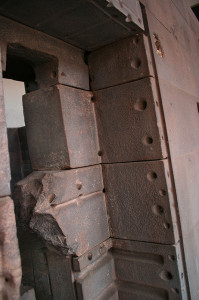 Our next Inca stop was Ollataytambo, to see the temple of the sun. The steep climb to the temple is rewarded with fine Inca construction, where huge Stonehenge style stones have been moved from a quarry the other side of the valley to the site are cut and placed so meticulously that only the finest of binding materials are required to seal the walls. An Andean cross is the key to the central part of the temple as are the water irrigation channels that direct pure glacier waters down through the site and to the town below. Most of the town is has been built on the Inca wall foundations followed by adobe bricks (mud and straw) with thatched roofs, though now all the roofs have been replaced by corrugated iron.
Our next Inca stop was Ollataytambo, to see the temple of the sun. The steep climb to the temple is rewarded with fine Inca construction, where huge Stonehenge style stones have been moved from a quarry the other side of the valley to the site are cut and placed so meticulously that only the finest of binding materials are required to seal the walls. An Andean cross is the key to the central part of the temple as are the water irrigation channels that direct pure glacier waters down through the site and to the town below. Most of the town is has been built on the Inca wall foundations followed by adobe bricks (mud and straw) with thatched roofs, though now all the roofs have been replaced by corrugated iron. 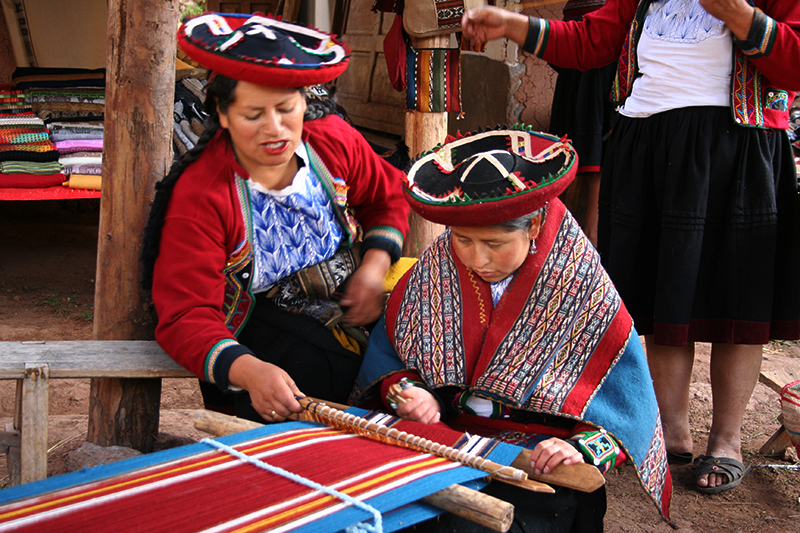 We then travelled onto Chinchero were the finest of the woven products are made using traditional methods to clean the llama wool (with cactus root), to dying the wools using herbs and vegetable colours, such as onion, to spinning then weaving into goods such as scarves, rugs and hats.
We then travelled onto Chinchero were the finest of the woven products are made using traditional methods to clean the llama wool (with cactus root), to dying the wools using herbs and vegetable colours, such as onion, to spinning then weaving into goods such as scarves, rugs and hats.
Tomorrow (Saturday) we are off to hike the world famous classic Inca trail. A five day trek along the mountain tops that finishes at Machu Pinchu. Debbie tells me that it involves camping; something that I thought involved questionable sexual activity on Wandsworth Common but I now understand involves sleeping under canvass. This is OK. I have seen the films in which smart men and willowy, beautiful blonds are served G&T in front of a campfire, followed by a 5 course meal prior to retiring to a spacious tent. Meanwhile, a mosquito wallah guards the camp perimeter to ensure that no terrestrial or extra terrestrial creepy crawlies invade the area. What can go wrong?

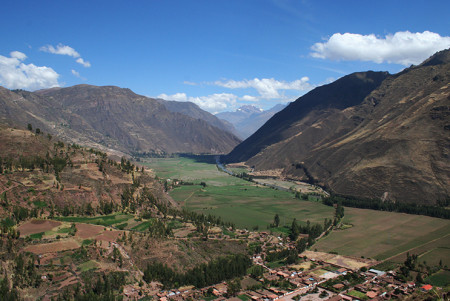
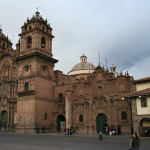
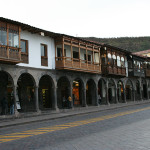
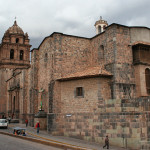
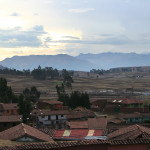
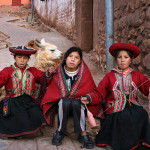
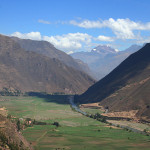
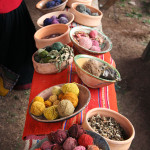
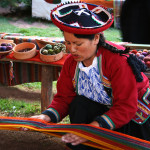
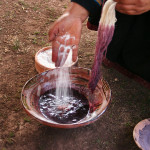
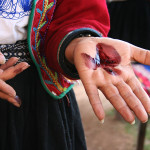
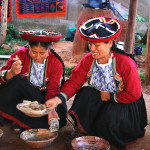
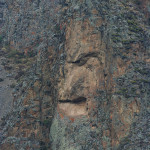
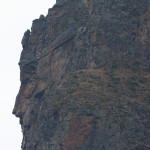
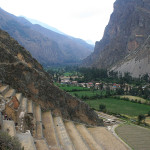
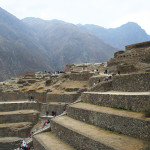
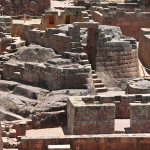
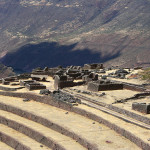
No comments yet.